Secret Garden of the Feminine
The Legacy of the Goddess
What were these societies like that revered the feminine–both the earth, which was seen as the ultimate life-giver, and woman, who stood at the doorway between this world and the spirit world? We have sought out and thrilled to stories of Atlantis and other legends of an earlier time, when people lived in harmony, beauty, and peace. Are these just stories, or are they memories in our collective unconscious? Eisler, in speaking of this time “when the wisdom of the mother was still honored and followed above all” cites the ancient Greek Poet Hesiod who “wrote of a `golden race’ who tilled the soil in `peaceful ease’ before a `lesser race’ brought in their god of war.”[1] She is quick to point out, however, that while scholars agree that these works are likely rooted in prehistoric events, allusions to an age when men and women lived together in peace and harmony are usually seen as mere fantasy.
Archaeological excavations during the past four or five decades, as well as reinterpretations of older digs using more advanced scientific dating procedures, have revised the way we view our past. Now we know that the European late Paleolithic and Neolithic were “a long period of peace and prosperity when our social, technological, and cultural evolution moved upward: many thousands of years when all the basic technologies on which civilization is built were developed in societies that were not male dominant, violent, and hierarchic.”[2]
Citing the lack of archaeological findings of heavy-duty weapons, warfare, fortifications, or defensive structures in the recent Old European sites, such as those of Neolithic southeastern Europe, Gimbutas asserts that these Goddess worshipers lived in peaceful societies; villages were located for their beautiful settings rather than defensive purposes. These early people “lived in an egalitarian society, very probably in a matrilinear system, had virtually no weapons except in the last (Copper Age) stage, and indulged in arts and crafts, stimulated by their ideology and mythical imagery.”[3]
Instead of fortresses, they built splendid homes and temples decorated with exquisitely beautiful art. One ancient city has been partially uncovered at Catal Hhyhk in Turkey. While only one acre of the thirty-two-acre site has been excavated, it appears that one-third of the buildings were temples or shrines[4]. Gimbutas’ findings, along with those of others, have changed forever the portrait previously held of early humans. Her investigations and research have destroyed once and for all the clichJd image of our ancestors as uncivilized, primitive cavemen dragging women off by their hair.
Eisler characterizes these peaceful, prosperous societies–which developed language, writing and advanced methods of agriculture, medicine, art, and architecture–as “partnership societies.” This model of society is in stark contrast to the “dominator” model we now find ourselves entrenched in.
Study of humanity’s past and present can help point us to a promising new direction for the future. In reexamining human society from a gender-holistic perspective, Eisler has created a new theory of cultural evolution called cultural transformation. This theory suggests that there are two main paradigms for society. The dominator model, based on ranking, is commonly referred to as either patriarchal or matriarchal. The partnership model, by contrast, is based on the principle of linking of social relations.
In the partnership paradigm of linking, diversity (being different, whether it be male/female or black/white), does not equate to good/bad or superior/inferior. In contrast, the modality of ranking–one people over another, one quality better than another–has trapped us in a mythology (and society) of polarities and dualities.
The cultural transformation theory goes on to suggest that the original cultural evolution was toward a partnership paradigm, and that these partnership societies arose in a linear manner “unbroken by destructions or disruptions . . . and without major cataclysms”[5] for almost three millennia. The implications of this information are staggering. What would our society be like today if the last four thousand years had been like the three that came before, if there had been no crusades, no battles, no wars–of any scale–waged for millennia? We are so enculturated to accept confrontation as the norm that the mind struggles to grasp the possibility of what our lives could be like without the history of conflicts we have endured and participated in since 2000 B.C.E.
[1]. Riane Eisler, The Chalice and the Blade (San Francisco: Harper & Row, 1988), p. xv.
[2]. Ibid., p. xvi.
[3]. Marija Gimbutas, “The Three Waves of the Kurgan People into Old Europe, 4500-2500 B.C.,” Archives suisses d’anthropologie generale 43.2 (1979): 113-137, at 113.
[4]. The Editors of Time-Life Books, The Human Dawn (Alexandria, Va.: Time-Life, 1990), p. 121.
[5]. Gimbutas, The Three Waves of the Kurgan People, p.113.



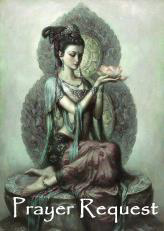
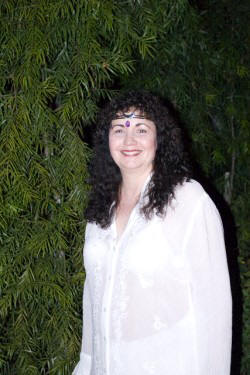 For almost two decades Rev. Xia has walked the path of the divine feminine, committed to her role as an inter-faith ambassador for the Pagan Community. Among her many articles, an essay entitled Paganism: Out of the Closet and into the Fire, originally written for her son’s school in Pasadena for a Diversity in Religion series, has been reprinted countless times. Additionally, she has written numerous mythological and ritual works centered around archetypal studies of the Goddess including Rites of Passage: A Goddess Ritual for Women, which aired on The Learning Channel–showing Pagan rites for Maiden, Mother, and Crone. She also produced and facilitated that segment for The Learning Channel. Additional articles include: Ritual and the Art of Alchemy, The Mythology of Nature, The Legacy of Creation Myths, The Myth of Matriarchy, and Secret Garden of the Feminine. She is completing a non-fiction book entitled, Feminine Alchemy: The Ritual Art of Cooking, a book of healing through Goddess archetypes which has been on the back burner for many years.
For almost two decades Rev. Xia has walked the path of the divine feminine, committed to her role as an inter-faith ambassador for the Pagan Community. Among her many articles, an essay entitled Paganism: Out of the Closet and into the Fire, originally written for her son’s school in Pasadena for a Diversity in Religion series, has been reprinted countless times. Additionally, she has written numerous mythological and ritual works centered around archetypal studies of the Goddess including Rites of Passage: A Goddess Ritual for Women, which aired on The Learning Channel–showing Pagan rites for Maiden, Mother, and Crone. She also produced and facilitated that segment for The Learning Channel. Additional articles include: Ritual and the Art of Alchemy, The Mythology of Nature, The Legacy of Creation Myths, The Myth of Matriarchy, and Secret Garden of the Feminine. She is completing a non-fiction book entitled, Feminine Alchemy: The Ritual Art of Cooking, a book of healing through Goddess archetypes which has been on the back burner for many years. My specific Priestess Path I wish to dedicate myself to is sacred circles. This means that my truest spiritual ecstasy comes from ritual in community with others. This is a large circle that includes not only planning and performing ritual, but also creating ritual art such as building altars, teaching ritual, making video…
My specific Priestess Path I wish to dedicate myself to is sacred circles. This means that my truest spiritual ecstasy comes from ritual in community with others. This is a large circle that includes not only planning and performing ritual, but also creating ritual art such as building altars, teaching ritual, making video…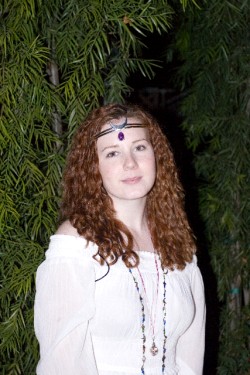 Marcella, our youngest priestess, has been a professional actor for many years. She is a graduate of the Los Angeles County High School for the Arts. Other training includes Viewpoints/Suzuki with Anthony Byrnes, Voice-Over Workshops with Sharon Mack, and the Royal Academy of Dramatic Arts in London, a Shakespeare Intensive. Her theater credits include The Cherry Orchard, A Midsummer Night’s Dream, and The Wizard of Oz. Her film credits include, Punch-Drunk Love, A Host of Trouble, and Kids in America. She has co-starred on various television shows, such as NCIS, Boston Legal, The O’Keefe’s, and Malcolm in the Middle. Awards encompass 1st Place in the 2005 and 2006 DTASC Shakespeare Competition / monologue, 1st Place 2005 RoleAbout / Cold Reading, 1st Place 2005 RoleAbout / Classical Monologue, and was the Silver Medalist ROP Outstanding Student in TV/Film.
Marcella, our youngest priestess, has been a professional actor for many years. She is a graduate of the Los Angeles County High School for the Arts. Other training includes Viewpoints/Suzuki with Anthony Byrnes, Voice-Over Workshops with Sharon Mack, and the Royal Academy of Dramatic Arts in London, a Shakespeare Intensive. Her theater credits include The Cherry Orchard, A Midsummer Night’s Dream, and The Wizard of Oz. Her film credits include, Punch-Drunk Love, A Host of Trouble, and Kids in America. She has co-starred on various television shows, such as NCIS, Boston Legal, The O’Keefe’s, and Malcolm in the Middle. Awards encompass 1st Place in the 2005 and 2006 DTASC Shakespeare Competition / monologue, 1st Place 2005 RoleAbout / Cold Reading, 1st Place 2005 RoleAbout / Classical Monologue, and was the Silver Medalist ROP Outstanding Student in TV/Film.
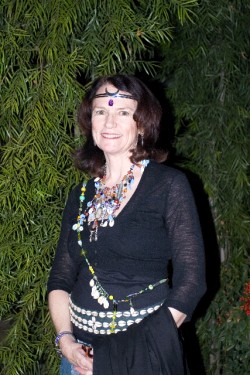 I have been following the path of the goddess for over 30 years. As an artist, I have always been interested in the mutual influence between the personal and political, private and communal, spiritual and artistic expression.
I have been following the path of the goddess for over 30 years. As an artist, I have always been interested in the mutual influence between the personal and political, private and communal, spiritual and artistic expression.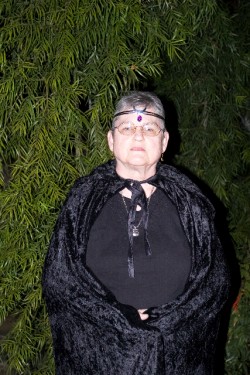 God was strictly male in the forties. And the males in my life were minor demi-gods to be obeyed without question. Father, priests, especially Monsignor, policemen, doctors–they protected me, taught me, molded me. My teachers (grade and high school) were Catholic nuns, but they were under the supervision and control of the priesthood.
God was strictly male in the forties. And the males in my life were minor demi-gods to be obeyed without question. Father, priests, especially Monsignor, policemen, doctors–they protected me, taught me, molded me. My teachers (grade and high school) were Catholic nuns, but they were under the supervision and control of the priesthood.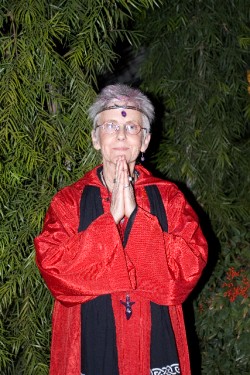 Introduction—the beginning February, 1986
Introduction—the beginning February, 1986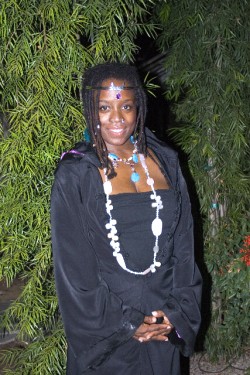 Haize Rosen has worked professionally as an actress, dancer and choreographer for 20 years. Haize is also an energy-light worker, certified in Thai massage and Hellerwork. To complement her work in the healing arts, Haize is a certified assistant mid-wife, and has a thriving doula practice. As a dancer, Haize has studied Balinese, The Orishas of both Africa and Brazil, and Classical Indian Dance in the style of Odissi. She has choreographed such renowned musicals as Guys and Dolls, Fiddler on the Roof, Little Shop of Horrors, and Grease. Haize recently wrote and starred in her one-woman shop, Country Colored Girl, which chronicled her family history in a small town in Alabama. She has studied ballet with Joy Finch, and acting at Lee Strausberg. Haize has worked rehabbing children at Juvenile Hall and taught theater and dance professionally in workshops throughout Los Angeles. The ordination onto her Priestess path in Temple of the Goddess is a culmination of her life’s work and provides an opportunity for Haize to apply her knowledge and skills in new and effective ways in the world.
Haize Rosen has worked professionally as an actress, dancer and choreographer for 20 years. Haize is also an energy-light worker, certified in Thai massage and Hellerwork. To complement her work in the healing arts, Haize is a certified assistant mid-wife, and has a thriving doula practice. As a dancer, Haize has studied Balinese, The Orishas of both Africa and Brazil, and Classical Indian Dance in the style of Odissi. She has choreographed such renowned musicals as Guys and Dolls, Fiddler on the Roof, Little Shop of Horrors, and Grease. Haize recently wrote and starred in her one-woman shop, Country Colored Girl, which chronicled her family history in a small town in Alabama. She has studied ballet with Joy Finch, and acting at Lee Strausberg. Haize has worked rehabbing children at Juvenile Hall and taught theater and dance professionally in workshops throughout Los Angeles. The ordination onto her Priestess path in Temple of the Goddess is a culmination of her life’s work and provides an opportunity for Haize to apply her knowledge and skills in new and effective ways in the world. 

